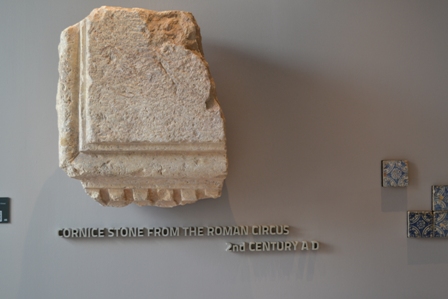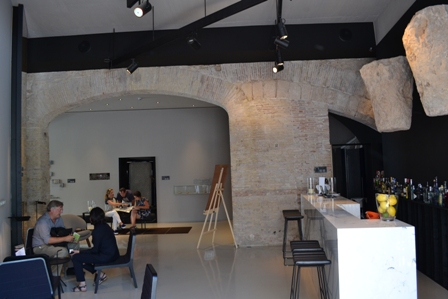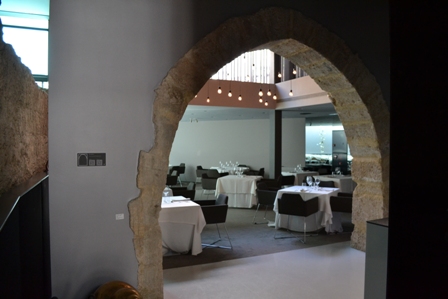When you enter the Marque de Caro Hotel, it’s not unusual, as Tom Jones said, to take a step back, wondering if you’ve accidentally wandered into a museum.
As soon as you enter you are bombarded by history with a second century cornice stone from the Roman Circus, a Roman mosaic carefully preserved under a glass floor, 10th and 12th century Moorish lanterns, 15th century Gothic tiles and 18th century typically Valencian tiles too.
The current owners, four Valencian entrepreneurs, were clearly not just interested in fast money when they bought the ruined palace in 2005 and spent seven years and a not inconsiderable amount of money on lovingly restoring the building and turning it into a 5 star jewel among Valencian hotels in the historic centre of Valencia; so historical in fact that a large part of the old Arab wall that surrounded the city and didn’t quite manage to keep out El Cid, can be found inside the downstairs restaurant to be perused as you dine and admire the more recent range of bronze statuettes by the artist from Carlet, Jaume Espí.
But let’s go back in time, as the hotel entices us to do.
Nicolás García Caro y Ferrer de Plegamans, the 2nd Marquis of Caro, was born in 1865, and was the son of Nicolás García Caro, the then Mayor of Valencia, and Rosa Ferrer de Plegamans. In 1869, just four years after his birth, his father purchased the building and renovated it in keeping with the fashion and tastes of the era. This renovation project was wholescale and the old Gothic palace integrated into the Casas del Temple was converted into the Palace of the Marquis of Caro, an urban palace of eclectic appearance and catalogued as a listed building by the municipal authorities of the Town Hall of Valencia.
Francisco Jurado was the architect and Francesc Rifé the interior designer, both of whom were largely responsible for the transformation and were also two of the owners who put their money into the project.
The hotel is full of what they refer to as ‘hotspots’ for the curious, short stories that give the keys to understanding the whole project. Finding these hotspots is made easy by the use of QR (quick response codes), which tell guests and visitors what it is that they are looking at.
26 bedrooms and 3 function rooms all have unique architectural artefacts to enthrall lovers of history. For example the inside of the arches that give access to the Arabic tower occupies the main wall of room 25.
Room 04 has an even more interesting surprise. On the top of the bathtub the guests may observe some of the voussoirs of an arch that was once one of the city’s gates.
Room 16 occupies the space that was once used as the Palace kitchen, and rooms 04 and 15 are literally within the Arabic tower. Furthermore, room 04 also contains two old perfume vials, and the terrace of room 05 displays a blue marble block which is almost 2000 years old.
Not everything is ancient however; the modernist marble staircase that connects the lobby to the noble area of the Palace exudes youth, having been erected as recently as 1869 on the old stone steps of the Gothic palace.
Caro Hotel is certainly a Valencia International icon, employing 40 people from 15 different nationalities, and to sit in the friendly foyer (by which I mean it has a bar) is to be transported by to the Tower of Babel and to soak up languages from all over the world.
All photos by Mark Sicon
https://es-es.facebook.com/marksiconphotography/







